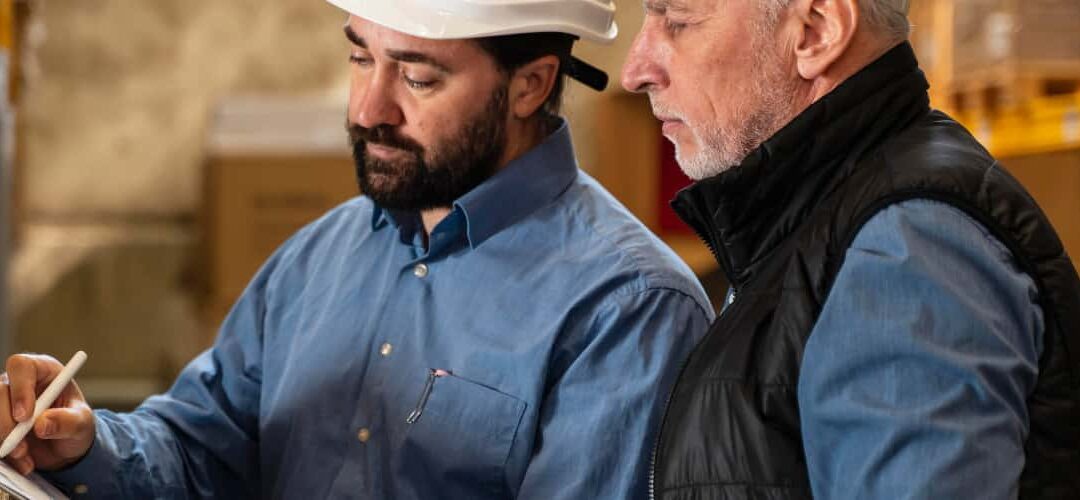Imagine you’re a procurement manager at a mid-sized electronics company. You’ve just received a shipment of crucial components, only to discover that a large percentage are defective. Your production line grinds to a halt, and you’re forced to scramble for replacements to fulfill customer orders. This situation not only damages your brand’s reputation but also causes unexpected costs and project delays. In the aftermath, your team sits down to determine how this could have been prevented. The answer soon becomes clear: if you had conducted a detailed check of your supplier’s processes and quality management systems beforehand, you might have avoided this crisis altogether.
That is exactly what a vendor audit sets out to achieve: reducing risks, verifying capabilities, and building a foundation of trust between buyers and suppliers.
Vendor audits are a critical aspect of modern supply chain management. In simple terms, a vendor audit is a structured, systematic examination of a supplier’s operations, documentation, and practices. Although the phrase “audit” might sound intimidating, the goal is not solely to find faults but to uncover areas of potential risk and improvement. By doing so, both the buyer and the supplier can benefit from fewer defects, smoother deliveries, and a more transparent working relationship.
1. Defining a Vendor Audit in Detail
A vendor audit is a systematic assessment of a supplier’s ability to meet agreed-upon standards, whether those standards are legal, regulatory, contractual, or based on a buyer’s internal quality requirements. Companies use vendor audits to verify a supplier’s compliance, quality management systems, production processes, and overall business practices. This ensures that the products or services delivered will meet the buyer’s expectations and any relevant industry regulations.
1.1. Who Performs the Vendor Audit?
A vendor audit can be carried out by several different parties:
The Buyer’s Internal Team:
Some organizations have dedicated supplier quality assurance teams that handle vendor audits in-house. These employees are typically trained in auditing methods and thoroughly understand the company’s product requirements.
Independent Third Parties:
In many cases, companies prefer hiring specialized auditing firms. These firms bring a neutral perspective and are often accredited or certified to conduct audits following specific standards (ISO guidelines, for example). Third-party audits can provide added credibility because of their impartial stance.
Joint Buyer-Supplier Teams:
Although less common, buyers and suppliers sometimes collaborate on an audit to foster transparency. This approach can build trust, but it requires a strong existing relationship and a willingness on both sides to share information openly.
1.2. Scope and Objectives of a Vendor Audit
When preparing for a vendor audit, it’s important to define clear objectives. Here are a few typical aims:
- Quality Verification: Checking whether the supplier’s quality control measures match the buyer’s requirements.
- Regulatory Compliance: Confirming that the vendor complies with relevant local or international laws and standards, especially critical in industries like food, pharmaceuticals, and electronics.
- Risk Identification: Identifying potential issues such as supply interruptions, lack of proper documentation, inadequate testing methods, or poor security measures in data handling.
- Process Improvement: Suggesting methods to optimize workflows, reduce waste, or enhance safety.
- Relationship Building: Strengthening trust between the buyer and supplier through open communication and aligned goals.
1.3. Methods of Conducting an Audit
Vendor audits can be done in different formats, depending on the relationship between the buyer and supplier as well as practical constraints like distance and budget:
On-Site Audits
The most thorough approach, where auditors physically visit the supplier’s facilities. This allows them to observe production lines, storage conditions, and employee practices in real time.
Remote Audits
Conducted via video calls, document review, and photo or video evidence. Remote audits can be useful in situations where travel is not possible, such as during global disruptions or for distant locations. However, they may not be as comprehensive as on-site visits.
Hybrid Audits
A combination of remote document reviews with an on-site visit for key processes. This method can be efficient if a complete on-site audit is too time-consuming or expensive.
2. Key Elements of a Vendor Audit
While no two vendor audits are exactly the same, they often share several common elements. Understanding these components will help illuminate what a vendor audit really entails.
2.1. Documentation Review
The first step in many audits is reviewing the supplier’s internal documents. These can include:
- Quality Manuals: Outlining the organization’s quality policies and methodologies.
- Standard Operating Procedures (SOPs): Detailed instructions that cover how tasks are performed, such as assembly steps or testing protocols.
- Training Records: Indicating how employees are trained and whether they maintain necessary certifications for specialized tasks.
- Certificates and Licenses: Verifying that the supplier meets industry standards like ISO 9001 (for general quality management), ISO 14001 (for environmental management), or ISO 45001 (for occupational health and safety), if relevant to the product or service.
During this documentation review, auditors look for evidence of a well-structured quality management system. If documents are incomplete, contradictory, or outdated, these can be signs of disorganized processes or a lack of commitment to quality.
2.2. On-Site Examination (If Applicable)
In a thorough vendor audit, an on-site visit can yield valuable insights:
- Facility Walkthrough: Auditors check the cleanliness, organization, and efficiency of production or storage areas. They also look for signs of good maintenance and safety practices.
- Equipment Inspection: Ensuring that machinery and instruments are calibrated and functioning correctly. Auditors may ask for calibration records or maintenance logs to confirm regular checks.
- Observation of Processes: Watching how the supplier performs critical tasks can uncover shortcuts or inconsistencies in how employees follow standard procedures.
2.3. Interviews and Discussions
Communication is a major factor in a vendor audit. Auditors often speak with various members of the supplier’s team—from top management to shop-floor operators. These interviews can reveal:
- Management’s Approach: Does leadership support and invest in continuous improvement? How do they handle quality problems or regulatory changes?
- Employee Competencies: Are employees knowledgeable about the processes they perform? Do they understand quality requirements?
- Problem-Solving Culture: Does the company openly address issues, or do they try to hide mistakes to maintain a perfect record?
2.4. Sampling and Testing
If physical products are involved, auditors may request samples for off-site testing or conduct spot checks on the production line. For instance, if the supplier manufactures electronic components, an auditor might test a sample for functionality, durability, or compliance with safety standards like UL or CE.

3. Primary Purpose of a Vendor Audit
3.1. Verification of Compliance
One of the main reasons companies invest time and resources in vendor audits is to verify compliance. This means checking that suppliers:
- Meet Legal Requirements: For example, a food manufacturer might need to follow local health codes as well as international food safety regulations, such as the FDA or European standards.
- Align with Industry Standards: In technology or automotive manufacturing, suppliers might need to comply with ISO/TS 16949 for automotive production.
- Honor Contractual Obligations: If a contract states that a supplier must use specific materials or meet certain product specifications, the audit confirms that this is being done consistently.
3.2. Risk Mitigation
Supply chains are more globalized and complex than ever. A single weak link can lead to product recalls, legal liabilities, and damage to brand reputation. Vendor audits act as a preventative measure:
- Detecting Potential Problems Early: By evaluating production processes, documentation, and capabilities, audits help buyers spot issues before they escalate.
- Reducing Financial Loss: Failures in the supply chain can be very costly. Audits help companies avoid expensive product rejections, rework, or shipping delays.
- Protecting Brand Image: Quality scandals or non-compliance incidents can damage a company’s standing in the marketplace, sometimes irreparably.
3.3. Building Trust and Transparency
A robust vendor audit process sends a strong message: the buyer values transparency and quality. When both parties work cooperatively, audits can improve communication and foster a collaborative environment focused on mutual growth. Suppliers who pass audits gain the buyer’s confidence, often leading to longer-term relationships and potential business expansion.
3.4. Encouraging Continuous Improvement
An audit is more than a one-time event. The findings often come with recommendations that can lead to better efficiency, safety, or quality. Over time, a supplier who takes these suggestions seriously can enhance their competitiveness and attract more clients. Thus, vendor audits play a role in ongoing improvement cycles, pushing suppliers to refine their operations and adopt best practices.
4. Technical Aspects of a Vendor Audit
While “technical” can mean different things depending on the industry, here we’ll focus on the systematic and structured methods used in vendor audits:
4.1. Vendor Audit Checklists
A well-designed audit typically starts with a checklist that outlines all the points to be evaluated. This can include:
- Regulatory Requirements: Specific laws or industry norms.
- Product Specifications: Details on materials, dimensions, or performance metrics the vendor must meet.
- Quality Management Criteria: ISO-based or company-specific guidelines.
- Environmental and Safety Measures: If applicable, the auditor checks for compliance with environmental regulations and safe working conditions.
By having a detailed checklist, auditors maintain consistency and ensure that no critical aspect is overlooked. This method is especially useful when multiple auditors are involved or when vendor audits happen regularly.
4.3. Re-Audits and Continuous Monitoring
A vendor audit is rarely a one-time event. Buyers may schedule periodic re-audits to ensure that corrective actions are in place and to review any process changes. Some industries, like medical devices or pharmaceuticals, have strict rules requiring repeated audits at set intervals. In other cases, re-audits may be triggered by major changes in a supplier’s processes, leadership, or location.
Conclusion
In summary, a vendor audit is a vital tool that helps organizations verify their suppliers’ compliance, manage risks, and maintain high-quality products or services. Through careful planning, thorough documentation review, on-site inspection, and transparent communication, buyer organizations can ensure that their supply chain partners are reliable and capable of meeting the required standards. While an audit can seem daunting to both parties, it ultimately strengthens relationships by promoting openness, accountability, and mutual understanding. By investing in vendor audits, companies protect their reputation, satisfy regulators, and deliver consistent quality to their end customers.
Supplier Verification Audit of Mars
While many organizations conduct vendor audits, some companies provide specialized services tailored to specific needs. One such offering is the Supplier Verification Audit Services. Through this program, we conduct detailed assessments of suppliers, focusing on quality systems, documentation, and overall compliance. Here’s what sets this service apart:
- Comprehensive Scope: We not only checks for basic compliance but also examines deeper aspects of the vendor’s processes, such as their approach to continuous improvement, employee training, and risk management strategies.
- Industry Expertise: With extensive experience in quality management, our teams are familiar with a range of industries and regulatory frameworks. This allows them to offer targeted guidance that aligns with each client’s unique requirements.
- Actionable Reporting: After the audit is complete, Mars provides a clear and detailed report. This document highlights both strengths and areas needing attention, giving the supplier a roadmap for ongoing improvement.
- Partnership Approach: Mars views vendor audits as a collaboration rather than a mere inspection. By engaging with the supplier’s management and staff, they aim to build trust and encourage open dialogue about potential challenges and solutions.

